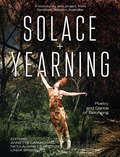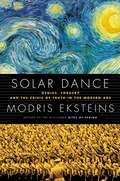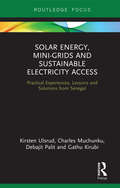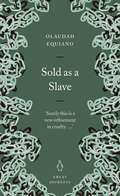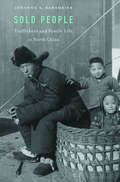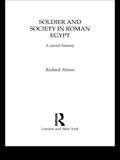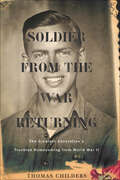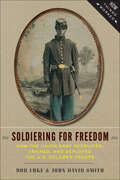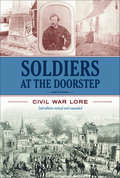- Table View
- List View
Solace + Yearning – Poetry of Dance and Belonging: A Community Arts Project from Denmark, Western Australia
by Annette Carmichael‘Solace + Yearning’ layers landscape, poetry, eco-art and contemporary dance to create an immersive space for many voices: yearning to connect to country, grief for what is absent, and reaching towards an understanding of indigenous language and culture. “Along the edges, voices call softly, softly… the past speaking to the present.” This multi-arts collaboration explores ‘settler guilt’ and ‘solastalgia’—a sense of loss caused by environmental change—in a small rural community. The work unravels contradictory and complicated feelings about Australia’s stories, the assumed advantage of non-indigenous Australians, and yet our deep longing for the wisdom and connection intrinsic in indigenous cultures. “It is beneath the bark where stories are whispered and life rises to stitch together this river with this sky.” Performed in Denmark, Western Australia in 2012, and again as a solo performance by Annette Carmichael in 2014, these images and reflections portray a complex relationship between people and place. “Sometimes, sometimes I make the mistake of thinking that what has not been written down has been forgotten.” With gratitude to Joey Williams, Wayne Webb, Toni Webb, and Harley Coyne, who walked the trail with us and generously shared their Noongar culture and stories.
Solar Dance
by Modris EksteinsIn Solar Dance, acclaimed writer and scholar Modris Eksteins uses Vincent van Gogh as his lens for this brilliant survey of Western culture and politics in the last century. The long-awaited follow-up to Modris Eksteins' internationally acclaimed Rites of Spring and Walking Since Daybreak. Now he has produced another thrilling, iconoclastic work of cultural history that is a trailblazing biography of an era--from the eve of the First World War and the rise of Hitler to the fall of the Berlin Wall--that illuminates our current world, with its cults of celebrity and the crisis of the authentic. Solar Dance is a penetrating examination of legitimacy and truth, fakery and pretence--highly relevant to all of us today.From the Hardcover edition.
Solar Energy, Mini-grids and Sustainable Electricity Access: Practical Experiences, Lessons and Solutions from Senegal (Routledge Focus on Environment and Sustainability)
by Debajit Palit Kirsten Ulsrud Charles Muchunku Gathu KirubiThis book presents new research on solar mini-grids and the ways they can be designed and implemented to provide equitable and affordable electricity access, while ensuring economic sustainability and replication. Drawing on a detailed analysis of solar mini-grid projects in Senegal, the book provides invaluable insights into energy provision and accessibility which are highly relevant to Sub-Saharan Africa, and the Global South more generally. Importantly, the book situates mini-grids in rural villages within the context of the broader dynamics of national- and international-level factors, including emerging system innovation and socio-technical transitions to green technologies. The book illustrates typical challenges and potential solutions for practitioners, policymakers, donors, investors and international agencies. It demonstrates the decisive roles of suitable policies and regulations for private-sector-led mini-grids and explains why these policies and regulations must be different from those that are designed as part of an established, centralized electricity regime. Written by both academics and technology practitioners, this book will be of great interest to those researching and working on energy policy, energy provision and access, solar power and renewable energy, and sustainable development more generally.
Sold as a Slave (Great Journeys Ser. #No. 8)
by Olaudah EquianoIn an adventurous and extraordinary life, Equiano (c.1745-c.1797) criss-crossed the Atlantic world, from West Africa to the Caribbean to the USA to Britain, either as a slave or fighting with the Royal Navy. His account of his life is not only one of the great documents of the abolition movement, but also a startling, moving story of danger and betrayal.Great Journeys allows readers to travel both around the planet and back through the centuries – but also back into ideas and worlds frightening, ruthless and cruel in different ways from our own. Few reading experiences can begin to match that of engaging with writers who saw astounding things: Great civilisations, walls of ice, violent and implacable jungles, deserts and mountains, multitudes of birds and flowers new to science. Reading these books is to see the world afresh, to rediscover a time when many cultures were quite strange to each other, where legends and stories were treated as facts and in which so much was still to be discovered.
Sold People: Traffickers and Family Life in North China
by Johanna S. RansmeierTrade in human lives thrived in North China during the Qing and Republican periods. Families at all social levels participated in buying servants, slaves, concubines, or children and disposing of unwanted household members. Johanna Ransmeier shows that these commonplace transactions built and restructured families as often as it broke them apart.
Soldaderas in the Mexican Military: Myth and History
by Elizabeth SalasThis study explores the evolving role of women soldiers in Mexico—as both fighters and cultural symbols—from the pre-Columbian era to the present.Since pre-Columbian times, soldiering has been a traditional life experience for innumerable women in Mexico. Yet the many names given these women warriors—heroines, camp followers, Amazons, coronelas, soldadas, soldaderas, and Adelitas—indicate their ambivalent position within Mexican society. In this original study, Elizabeth Salas challenges many traditional stereotypes, shedding new light on the significance of these women.Drawing on military archival data, anthropological studies, and oral history interviews, Salas first explores the real roles played by Mexican women in armed conflicts. She finds that most of the functions performed by women easily equate to those performed by revolutionaries and male soldiers in the quartermaster corps and regular ranks. She then turns her attention to the soldadera as a continuing symbol, examining the image of the soldadera in literature, corridos, art, music, and film.Salas finds that the fundamental realities of war link all Mexican women, regardless of time period, social class, or nom de guerre.
Soldier and Society in Roman Egypt: A Social History
by Richard AlstonThe province of Egypt provides unique archaeological and documentary evidence for the study of the Roman army. In this fascinating social history Richard Alston examines the economic, cultural, social and legal aspects of a military career, illuminating the life and role of the individual soldier in the army.Soldier and Society in Roman Eygpt provides a complete reassessment of the impact of the Roman army on local societies, and convincingly challenges the orthodox picture. The soldiers are seen not as an isolated elite living in fear of the local populations, but as relatively well-integrated into local communities. The unsuspected scale of the army's involvement in these communities offers a new insight into both Roman rule in Egypt and Roman imperialism more generally.
The Soldier and the Citizen: Role of the Military in Taiwan's Development (Taiwan In The Modern World Ser.)
by Monte R. BullardA soldier-citizen describes the role of the Republic of China's military in the political socialization of Taiwan's citizens during the first two decades after the loss of the Chinese mainland.
Soldier Dead: How We Recover, Identify, Bury, & Honor Our Military Fallen
by Michael SledgeThe first book to address the complicated issues surrounding what happens to members of the United States Armed Forces after they die. Why does recovering the remains of servicepeople matter? Soldier Dead examines this question and provides a thorough analysis of the processes of recovery, identification, return, burial, and remembrance of the dead. Sledge traces the ways in which the handling of our Soldier Dead has evolved over time and how these changes have reflected not only advances in technology and capabilities but also the shifting attitudes of the public, government, and military. He also considers the emotional stress experienced by those who handle the dead; the continuing efforts to retrieve bodies from Korea and elsewhere; and how unresolved issues regarding the treatment of enemy dead continue to affect U.S. foreign relations. Skillfully incorporating excerpts from interviews, personal correspondence and diaries, military records, and journalistic accounts—as well as never-before-published photographs and his own reflections—Michael Sledge presents a clear, concise, and compassionate story about what the dead mean to the living. Throughout Soldier Dead, the voices of the fallen are heard, as are those of family members and military personnel responsible for the dead before final disposition. At times disturbing and at other times encouraging, they are always powerful as they speak of danger, duty, courage, commitment, and care. &“A timely and detailed investigation into the moral conscience of American society which will be of interest to anyone concerned with the human costs of war. An important and passionate book which deserves a wide readership.&”—Chris Shilling, University of Portsmouth, UK
Soldier From The War Returning: The Greatest Generation's Troubled Homecoming from World War II
by Thomas ChildersA revelatory social history examining the lives of American military veterans after their return home following World War II.“Thomas Childers’s heartbreaking book makes palpable the human cost of a conflict too often sanitized as ‘the good war.’” —Chicago TribuneOne of our most enduring national myths surrounds the men and women who fought in the so-called “Good War.” The Greatest Generation, we’re told by Tom Brokaw and others, fought heroically, then returned to America happy, healthy and well-adjusted. They quickly and cheerfully went on with the business of rebuilding their lives.In this shocking and hauntingly beautiful book, historian Thomas Childers shatters that myth. He interweaves the intimate story of three families—including his own—with a decades’ worth of research to paint an entirely new picture of the war’s aftermath. Drawing on government documents, interviews, oral histories and diaries, he reveals that 10,000 veterans a month were being diagnosed with psycho-neurotic disorder (now known as PTSD). Alcoholism, homelessness, and unemployment were rampant, leading to a skyrocketing divorce rate. Many veterans bounced back, but their struggle has been lost in a wave of nostalgia that threatens to undermine a new generation of returning soldiers.Novelistic in its telling and impeccably researched, Childers’s book is a stark reminder that the price of war is unimaginably high. The consequences are human, not just political, and the toll can stretch across generations.“Childers’s absorbing study offers an important corrective to sanitized tributes to the Good War’s legacy.” —Publishers Weekly“A powerful work of social history that readers will stay with to the last page.” —Booklist
Soldier Girls: The Battles of Three Women at Home and at War
by Helen ThorpeFrom an award-winning, "meticulously observant" (The New Yorker), and "masterful" (Booklist) writer comes a groundbreaking account of three women deployed to Afghanistan and Iraq, and how their military service affected their friendship, their personal lives, and their families.America has been continuously at war since the fall of 2001. This has been a matter of bitter political debate, of course, but what is uncontestable is that a sizeable percentage of American soldiers sent overseas in this era have been women. The experience in the American military is, it's safe to say, quite different from that of men. Surrounded and far outnumbered by men, imbedded in a male culture, looked upon as both alien and desirable, women have experiences of special interest. In Soldier Girls, Helen Thorpe follows the lives of three women over twelve years on their paths to the military, overseas to combat, and back home...and then overseas again for two of them. These women, who are quite different in every way, become friends, and we watch their interaction and also what happens when they are separated. We see their families, their lovers, their spouses, their children. We see them work extremely hard, deal with the attentions of men on base and in war zones, and struggle to stay connected to their families back home. We see some of them drink too much, have illicit affairs, and react to the deaths of fellow soldiers. And we see what happens to one of them when the truck she is driving hits an explosive in the road, blowing it up. She survives, but her life may never be the same again. Deeply reported, beautifully written, and powerfully moving, Soldier Girls is truly groundbreaking.
Soldiering for Freedom: How the Union Army Recruited, Trained, and Deployed the U.S. Colored Troops (How Things Worked)
by Bob Luke John David SmithThe story of an enormous step forward in both the struggle for black freedom and the defeat of the Confederacy: turning former enslaved men into Union soldiers.After President Lincoln issued the final Emancipation Proclamation of January 1, 1863, Confederate slaves who could reach Union lines often made that perilous journey. A great many of the young and middle-aged among them, along with other black men in the free and border slave states, joined the Union army. These U.S. Colored Troops (USCT), as the War Department designated most black units, materially helped to win the Civil War—performing a variety of duties, fighting in some significant engagements, and proving to the Confederates that Northern manpower had practically no limits.Soldiering for Freedom explains how Lincoln’s administration came to recognize the advantages of arming free blacks and former slaves and how doing so changed the purpose of the war. Bob Luke and John David Smith narrate and analyze how former slaves and free blacks found their way to recruiting centers and made the decision to muster in. As Union military forces recruited, trained, and equipped ex-slave and free black soldiers in the last two years of the Civil War, white civilian and military authorities often regarded the African American soldiers with contempt. They relegated the men of the USCT to second-class treatment compared to white volunteers. The authors show how the white commanders deployed the black troops, and how the courage of the African American soldiers gave hope for their full citizenship after the war.Including twelve evocative historical engravings and photographs, this engaging and meticulously researched book provides a fresh perspective on a fascinating topic. Appropriate for history students, scholars of African American history, or military history buffs, this compelling and informative account will provide answers to many intriguing questions about the U.S. Colored Troops, Union military strategy, and race relations during and after the tumultuous Civil War.
Soldiering Under Occupation
by Erella GrassianiOften, violent behavior or harassment from a soldier is dismissed by the military as unacceptable acts by individuals termed, "rotten apples." In this study, the author argues that this dismissal is unsatisfactory and that there is an urgent need to look at the (mis)behavior of soldiers from a structural point of view. When soldiers serve as an occupational force, they find themselves in a particular situation influenced by structural circumstances that heavily influence their behavior and moral decision-making. This study focuses on young Israeli men and their experiences as combat soldiers in the Israeli Defense Forces (IDF), particularly those who served in the "Occupied Palestinian Territories" (OPT) during the "Al Aqsa Intifada," which broke out in 2000. In describing the soldiers' circumstances, especially focusing on space, the study shows how processes of numbing on different levels influence the (moral) behavior of these soldiers.
Soldiers: A Global History of the Fighting Man, 1800–1945
by John A HaymondA global study of how soldiers lived, worked, and fought, and how many died, spanning from the Napoleonic War to World War II. No matter the war, no matter the army, no matter the nationality, common threads run through the experiences of men at war. Soldiers highlights these shared experiences across 150 years of warfare, from the Napoleonic Wars through World War II and everything in between, such as the Mexican and Crimean Wars, the American Civil War, the U.S. Indian Wars and Britain&’s imperial bush wars, the Boxer Rebellion, the Boer War, the First World War, and more. Haymond explores the experiences that connect soldiers across time and space and draws heavily from firsthand accounts to craft a narrative with flesh-and-blood immediacy. Soldiers is entertaining and informative: history at its best. Praise for Soldiers&“What makes Soldiers an interesting read is Haymond&’s writing style and technique of comparing the common experiences of fighting men regardless of uniform and time served during the period.... Highly recommended for both scholars and students alike. It is a must for readers interested in the experience and psychology of being a warrior during this period.&”—Military Review: The Professional Journal of the United States Army
Soldiers and the State in Zimbabwe (African Governance)
by Godfrey MaringiraThis book explores the barrack experiences of soldiers in post-independence Zimbabwe, examining the concept of military professionalism within a state in political crisis. Drawing upon interviews with former soldiers of the Zimbabwe National Army, Soldiers and the State in Zimbabwe casts a light on the oppression of soldiers by commanders who sought to repress and control the political thinking of their men. By contextualising the political, economic and material conditions in which Zimbabwean soldiers existed, Godfrey Maringira reveals the everyday victimisation and violence of the barracks. Exploring such events as the imposition of the Defence Act, the desertion of soldiers, and the 2017 military coup in Zimbabwe, the book presents and discusses the politicised nature of the military in post-independence Zimbabwe, and the political consequences of service in a state in deep political crisis. Soldiers and the State in Zimbabwe will be of interest to scholars and students of African Politics, military and security studies, and African studies.
Soldiers and Their Horses: Sense, Sentimentality and the Soldier-Horse Relationship in The Great War (Routledge Studies in Cultural History #83)
by Jane FlynnThe soldier-horse relationship was nurtured by The British Army because it made the soldier and his horse into an effective fighting unit. Soldiers and their Horses explores a complex relationship forged between horses and humans in extreme conditions. As both a social history of Britain in the early twentieth century and a history of the British Army, Soldiers and their Horses reconciles the hard pragmatism of war with the imaginative and emotional. By carefully overlapping the civilian and the military, by juxtaposing "sense" and "sentimentality," and by considering institutional policy alongside individual experience, the soldier and his horse are re-instated as co-participators in The Great War. Soldiers and their Horses provides a valuable contribution to current thinking about the role of horses in history.
Soldiers at the Doorstep: Civil War Lore
by Larry S. Chowning24 tales handed down by word-of-mouth detail life behind enemy lines during the Civil WarExpanded 2nd edition includes four more vignettes and photos and updates to previous entriesQuick-thinking residents used the fear of smallpox to spare a tavern from Union torches
Soldiers of Fortune: The Rise and Fall of the Chinese Military-Business Complex, 1978-1998
by James C. MulvenonIn 1978, faced with the pressure to modernize and a declining budget, the Chinese People's Liberation Army (PLA) reluctantly agreed to join China's economic reform drive, expanding its internal economy to market-oriented civilian production. This work examines PLA's role in the economy up to 1998.
Soldiers of the Plains
by P. E. ByrneThe Indian was the great soldier of the plains and, in many respects, the greatest fighter the world has ever known. But, unlike the white man, the Indian had no press agency through which to broadcast his story to the world.And so it comes about that for the most part such knowledge as we have respecting Indian war ventures, for example, comes not from the Indian but from sources having no interest in presenting the Indian point of view—from official government reports and from stories of men actively engaged with those opposed to the red man. The result: almost all reports of Indian warfare were unfavorable to the Indian,—his reasons for war misrepresented; his victories discounted; his acts of heroism, if mentioned at all, carefully flattened out to the level of the commonplace.In this account an attempt is made to say a word for the red man; to present his side fairly and with sympathetic understanding; to discuss frankly his experience in treaty negotiation; to draw attention to some of his remarkable military exploits; and to touch upon his high qualities as a factor in civilized life. To that extent it supplies a much needed contribution to the frontier history of our time, for we owe to the Indian a fair statement of his case and a just estimate of his qualities as a warrior and a man.The scope of the discussion is limited. It is concerned mainly with events leading up to and including the battle of the Little Big Horn, March 25-26, 1876. Incidentally something is contributed to a clearer understanding of General Custer’s part in that campaign.
The Soldier's Reward: Love and War in the Age of the French Revolution and Napoleon
by Jennifer Ngaire HeuerA sweeping history of intimacy and family life in France during the age of revolutionThe French Revolution and Napoleonic Wars devastated Europe for nearly a quarter of a century. The Soldier&’s Reward recovers the stories of soldiers and their relationships to family and domestic life during this period, revealing how prolonged warfare transformed family and gender dynamics and gave rise to new kinds of citizenship.In this groundbreaking work combining social, cultural, gender, and military history, Jennifer Ngaire Heuer vividly describes how men fought for years with only fleeting moments of peace. Combatants were promised promotion, financial gain, and patriotic glory. They were also rewarded for their service by being allowed to return home to waiting families and love interests, and with marriages that were arranged and financially supported by the state. Heuer explores competing ideas of masculinity in France, as well as the experiences of the men and women who participated in such marriages. She argues that we cannot fully understand the changing nature of war and peace in this period without considering the important roles played by family, gender, and romantic entanglements.Casting new light on a turbulent era of mass mobilization and seemingly endless conflict, The Soldier&’s Reward shows how, from the Revolution through the Restoration, war, intimacy, and citizenship intersected in France in new and unexpected ways.
A Soldier's Story: Revolutionary Writings by a New Afrikan Anarchist (Kersplebedeb)
by Kuwasi BalagoonKuwasi Balagoon was a participant in the Black Liberation struggle from the 1960s until his death in prison in 1986. A member of the Black Panther Party and defendant in the infamous Panther 21 case, Balagoon went underground with the Black Liberation Army (BLA). Balagoon was unusual for his time in that he combined anarchism with Black nationalism, broke the rules of sexual and political conformity, took up arms against the white supremacist State—all the while never shying away from critiquing the movements's weaknesses. The first part of this book consists of contributions by those who knew or were touched by Balagoon; the second consists of court statements and essays by Balagoon himself, including several documents which have never been published before. The third section consists of excerpts from letters Balagoon wrote while in prison. A final section includes a historical essay by Akinyele Umoja and an extensive intergenerational roundtable discussion of the significance of Balagoon's life and thoughts today.
Soledad Brother: The Prison Letters of George Jackson
by George Jackson Jean Genet Jonathan Jackson Jr.A collection of Jackson's letters from prison, Soledad Brother is an outspoken condemnation of the racism of white America and a powerful appraisal of the prison system that failed to break his spirit but eventually took his life. Jackson's letters make palpable the intense feelings of anger and rebellion that filled black men in America's prisons in the 1960s. But even removed from the social and political firestorms of the 1960s, Jackson's story still resonates for its portrait of a man taking a stand even while locked down.
Soles of a Survivor: A Memoir
by Nhi AronheimThe Unbelievable True Story of a Vietnamese Refugee Who Not Only Made the United States Her Home, But Learned the True Value of Hope, Love, and Religion Along the Way The soles of Nhi Aronheim's feet still bear the scars of her escape from Vietnam—trudging through the jungles of Cambodia as a twelve-year-old with a group of strangers seeking the land of opportunity: America. Her quest for survival through the Cambodian jungle eventually led her to a boat that took her to Thailand and an orphanage where Nhi lived for two years until she qualified for refugee status in the United States. Years later, she returned to Vietnam with a film producer to reunite with the family she never thought she&’d see again. A second trip to Vietnam brought her two mothers, birth and adopted, face to face. Yet Soles of a Survivor isn&’t just another inspirational survival story. It&’s about the lessons Nhi learned about humanity, diversity, and unconditional love since arriving in the United States. She now has a deeper appreciation for the parallels between the Jewish and Vietnamese cultures, and others. After she met her Jewish beau, they got married. She eventually converted to Judaism, though the process was challenging for an Asian woman adopted into a Christian household. Her story shows it matters less what religion we&’re part of, as long as we radiate goodness to those we meet. Now she relishes being a Vietnamese Jew. Having come full circle from prosperity to poverty and back, Nhi hopes to encourage others to believe that in spite of overwhelming odds, all things are possible if one has an intense desire, focused energy, and the audacity to grasp presented opportunities.
Solidarités provinciales: Histoire de la Fédération des travailleurs et travailleuses du Nouveau-Brunswick
by David Frank Réjean OuelletteLa Fédération des travailleurs et travailleuses du Nouveau-Brunswick, fondée en 1913, est la deuxième plus ancienne fédération provinciale du travail au Canada. Son histoire remonte aux premières campagnes en faveur de l’indemnisation des accidents du travail et de la reconnaissance syndicale, et elle se poursuit dans les plus récentes luttes visant à défendre les normes sociales et à protéger les emplois et les droits syndicaux. La Fédération a vu le jour dans la ville portuaire de Saint John et le centre ferroviaire de Moncton, puis elle s’est étendue aux travailleurs des mines et des usines du nord de la province, soutenant la cause des employés du secteur public et des travailleuses, reflétant les réalités de la vie et du travail dans une société bilingue. Puisant dans les archives, les journaux et les expériences des travailleurs et des travailleuses, voici l’histoire inédite de solidarités syndicales provinciales qui ont surmonté les divisions et les revers afin de rehausser le statut des travailleurs et des travailleuses dans la société néo-brunswickoise. Par cette étude pionnière rédigée dans un style clair et puissant, Frank apporte une contribution originale à la compréhension de l’évolution politique, économique et sociale de la province, et il aide à combler le besoin d’éclairer la connaissance que le public a de l’histoire des travailleurs et des syndicats de toutes les régions du Canada.
Solidarity and Conflict: European Social Law In Crisis
by Silvana SciarraThe ongoing austerity crisis is being felt in all sectors of EU law, but has had a particularly severe impact on labour law. <P><P>Silvana Sciarra, a leading judge and scholar of EU employment law, considers how solidarity regimes have been shaken by the crisis. She brings together existing European policies in social and employment law, to enhance synergies and developments in a post-crisis discourse. She looks at reactions of national constitutional courts to austerity measures and of international organizations in re-establishing respect of fundamental workers' rights. <P>Criticizing soft law approaches in employment policies, she favours recourse to binding measures connected with selective financial incentives through European funds. She highlights developments in European sector social dialogue and new horizons of transnational collective bargaining in large multinationals. Taking a positive, practical approach, Sciarra shows how social policies can enhance solidarity and social cohesion, through European financial support. <P>Provides a critical and constructive point of view on European social law developments.<P> Combines information on legal sources with proposals for better policy making.<P> Discusses highly topical issues around austerity and workers' rights.
